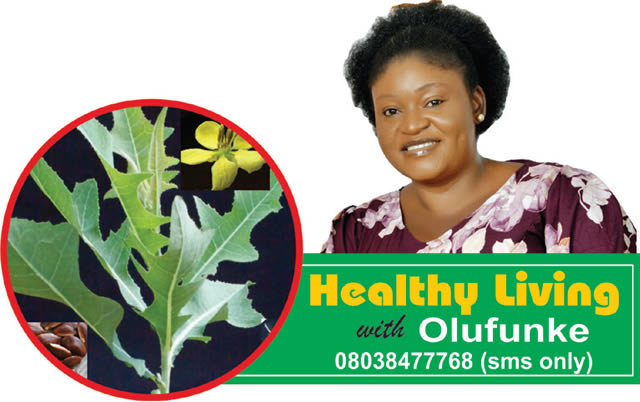
Before I had carpal tunnel syndrome (pinched nerve), I already had an experience that made me know how important vitamins are to our health. This story I am about to share must have happened around year 2000. I fell ill and after taking anti-malaria medications, I noticed I did not get better, so I had to go to the hospital. My blood sample was taken and when the results came, the doctor reeled them out and explained to me. They were not too good and within me I concluded that the medications I would be given would cause me to rob a bank.
I was surprised when the doctor handed me vitamin B, C, multivite, ferrous, folic acid and some others I cannot remember now. Okay, I remember that a medication for deworming was part of it because the blood test showed I had worms. You have not even heard the funniest part, wait for it. So, I was to come back to see the doctor days after commencing my medications. Immediately he saw me from afar, he exclaimed that “you are better now!” and truly, I felt better within me. At times, that feeling of ill-health may be due to depletion of vitamins in our body.
This week, I will be discussing vitamin A but before I proceed, I will like you to know that in this series, I will not discuss symptoms of the deficiencies of these vitamins because they may leave you guessing that it is a vitamin deficiency you are suffering from when in the actual fact it may be something of serious concern that warrants running to your doctor.
Vitamin A is a fat-soluble vitamin (A vitamin that can dissolve in fats and oils. Fat-soluble vitamins are absorbed along with fats in the diet and are stored in the body’s fatty tissue and in the liver) and an essential nutrient for humans. Two forms of vitamin A are found in food, one is preformed vitamin A (retinol and retinyl esters) which occurs exclusively in animal products such as dairy, liver and fish. The second form is provitamin A carotenoids (pigments that give yellow, orange and red fruits and vegetables their colour) which are abundant in plant foods such as fruits, vegetables and oils.
Preformed vitamin A is more readily absorbed and utilised by your body than plant-based sources of provitamin A carotenoids. Although, provitamin A is abundant in many fruits and vegetables, it is not always efficiently converted into retinol, the active form of vitamin A. For this, Vegans should include a really rich source of carotenoids in their daily diets to meet their requirements since preformed vitamin A is only found in animal-sourced foods. These preformed vitamin A are sometimes fortified into Vegan foods such as plant-based milks or margarine but if a Vegan does not consume these fortified foods, they will be completely reliant on beta carotene to meet their intake needs. Your body’s ability to effectively convert carotenoids such as beta carotene into active vitamin A depends on many factors including genetics, diet, overall health and medications
Foods highest in preformed vitamin A include: egg yolks, beef liver (animal livers are among the richest sources of vitamin A because like humans, animals store vitamin A in the liver), butter, cod liver oil, chicken liver, cheese, fish (like mackerel popularly called alaran/ Titus) and dairy products such as milk (including human breast milk).
Foods high in provitamin A carotenoids like beta carotene include sweet potatoes, pumpkin, carrots, kale, spinach, dandelion greens, collard greens, winter squash, cantaloupe, papaya(paw paw), red peppers, broccoli, mango, butternut squash, avocado pear, orange, maize (but not the white varieties). Red palm oil is also a good source.
Vitamin A is a potent antioxidant. It may protect against certain cancers. It supports bone health. It reduces your risk of acne. It is good for fetal development. Perhaps, one of the best-known functions of vitamin A is its role in vision and eye health. It is vital for hair growth. Additionally, it helps maintain surface tissues such as the intestines, lungs, bladder and inner ear. It supports immune function by supporting the growth and distribution of T cells, a type of white blood cells that protect the body from infection. It helps male and female reproductive health. It supports skin cell health and according to a study by the Department of Dermatology, University of Michigan Medical School, topical application of retinol has shown positive results in reversing aging.Vitamin A is famous for its wrinkle-eliminating properties which can reduce age spots and fine lines. It can slow down the aging process by enhancing the overall health of the skin.
Any amount not immediately needed by the body is absorbed and stored in fat tissue or the liver. If too much is stored, it can become toxic. In contrast to preformed vitamin A, beta-carotene is not toxic even at high levels of intake. If you must take vitamin A supplements, it is preferable to choose a multivitamin supplement that has all or the vast majority of its vitamin A in the form of beta-carotene than taking a supplement that contains preformed vitamin A.
In 2013, the World Health Organisation classified vitamin A deficiency as a public health problem as it was affecting about one in three children aged 6 to 59 months with the highest rates in sub-Saharan Africa and South-East Asia. In many countries, vitamin A supplementation in infants and children has been successfully integrated with routine immunisation services and vaccination campaigns.
I spoke with an eye specialist at the Obafemi Awolowo University, Ile-Ife, Osun State, who spoke on condition of anonymity. He said, “Vitamin A is a very important nutrient needed for clear and sharp sight. It is present in some forms of protein (rhodopsin) at the back of the eye (retina).These proteins help us see when light is low, for example in the dark. Persons deficient in Vitamin A have difficulty seeing in the dark and so are said to suffer from night blindness. It is also needed for clarity of vision. It helps the cornea (black portion of the eyeball) to maintain its transparency and this is very critical in being able to see very sharply.”
Because the vitamin is best absorbed by your body when you eat it with foods containing fat, when eating the non-oily food sources I listed above, you can pair them with the oily ones. For example, you can have carrots and sweet potatoes with a drizzle of olive oil on them. You can consume them with nut butter such as almond, cashew or peanut butters (I already mentioned these butters while on the nut series). It is also important not to overcook foods as this reduces the amount of vitamin A in them.
All the non-indigenous vegetables such as broccoli, spinach and kale that I mentioned above are available at supermarkets where vegetables are sold. There are individuals who sell non indigenous vegetables around too.
Unless you have a diagnosed vitamin deficiency, it is always best to meet your vitamin needs through a balanced, healthy diet.




